Cooling system and backplate
Of course, the generated waste heat is directly related to the recorded power, for which the cooling solution is responsible for optimum dissipation. This rather conservative cooling system relies on a large lamella heat sink and a small frame made of light metal for stabilizing and cooling some components (storage), which must be cooled from above by the air flow itself.
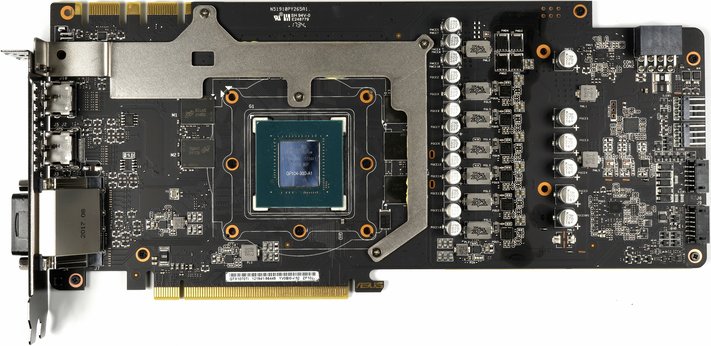
If we briefly remember the IR images and then look at the three centrally positioned memory modules, we also see that these modules located in the hotspot are only cooled very half-heartedly. We already know the consequences, especially since these modules are also the most demanded.
The used and blackened inside backplate is not used for cooling the back of the board, but also and for screwing the cooling frame on the front and stabilizing. In addition, the RGB light surface of the logo sits here.
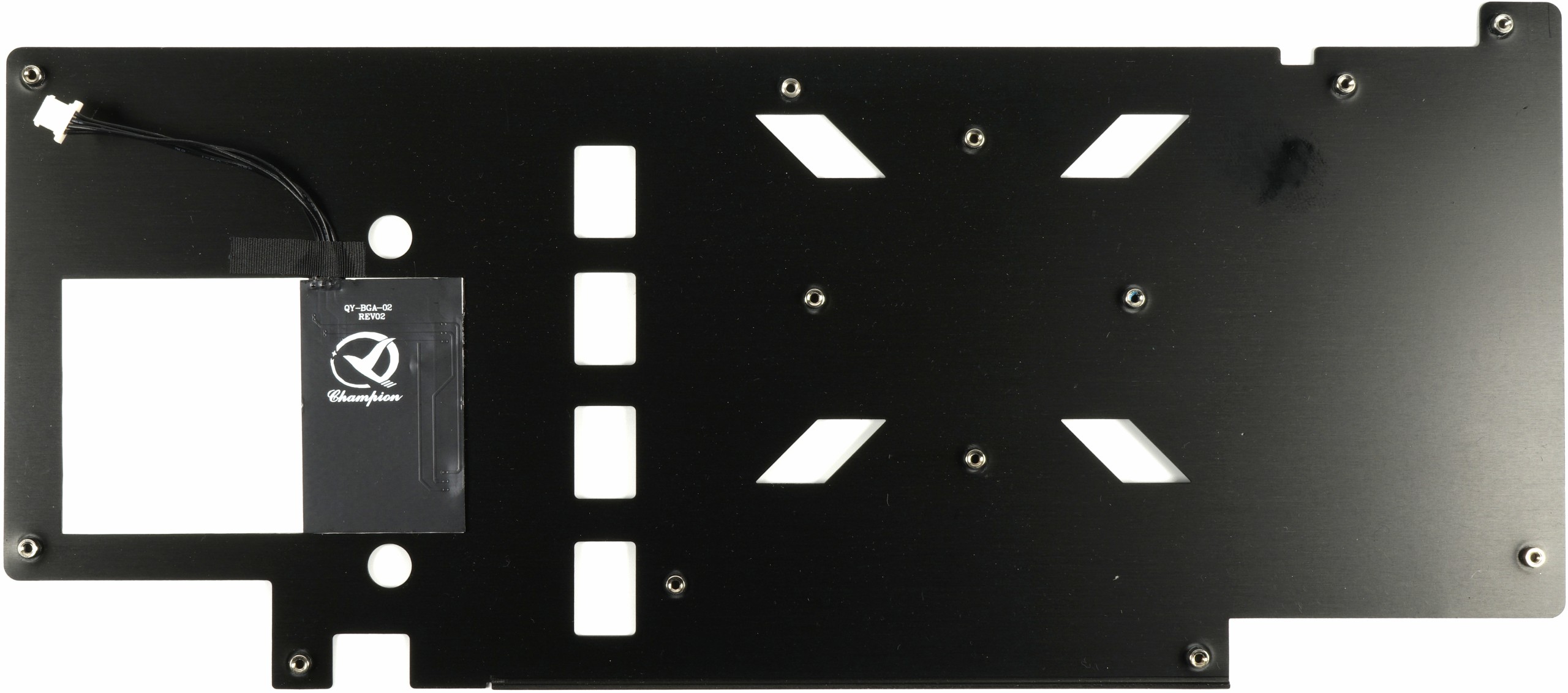
| Cooling system at a glance | |
|---|---|
| Type of cooler: | Air |
| Heatsink: | Nickel-plated, polished heat sink for GPU |
| Cooling fins: | Aluminum, vertical alignment |
| Heatpipes | 6x 6 mm, copper composite, nickel-plated |
| VRM cooling: | VRM via integrated heatsink |
| RAM cooling | via mounting frame |
| Fan: | 3x 8.7 cm fan modules (9 cm opening) 11 rotor blades each semi-passive regulation |
| Backplate | Aluminum, blackened no cooling function |
The cooler itself is a large and not very light Bolide, whose heatsink delights a total of six 6 mm heatpipes made of nickel-plated composite material with the absorbed GPU waste heat and hopes for quick removal. The polished and nickel-plated heat sink works excellently, as our measurements proved.
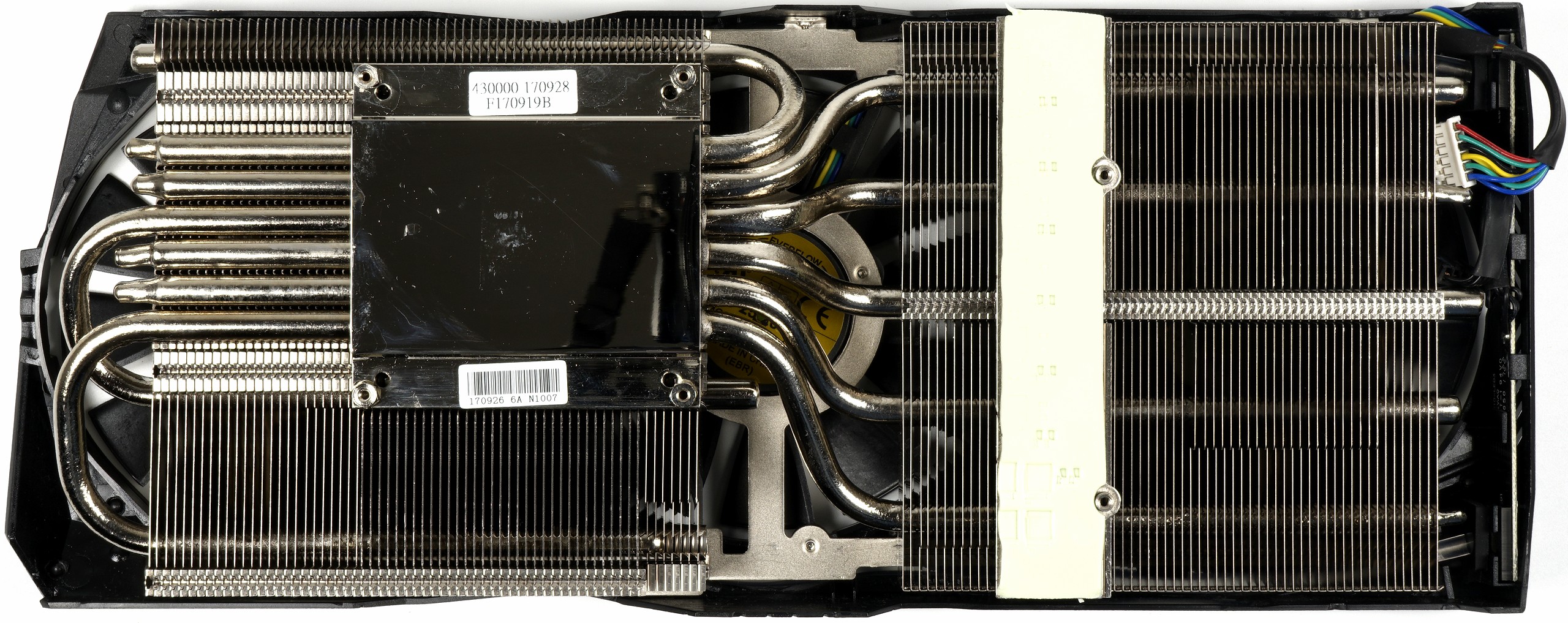
The three fans used, with their 11 blade-like rotor blades per fan, are designed for airflow and vortex rather than uniformly applied static pressure. However, we will come back to these fans later when it comes to fan control and speeds, because it remains pleasingly quiet.
Fan curves and noise emission ("volume")
The fan curves show that Asus uses a passive mode, i.e. a fan shutdown, and that the hysteresis has been perfectly tuned. Under load, the whole thing then levels in a closed housing at approx. 1377 rpm (<40% PWM) ein, was sehr leise bleibt. A big plus point has already been noted.
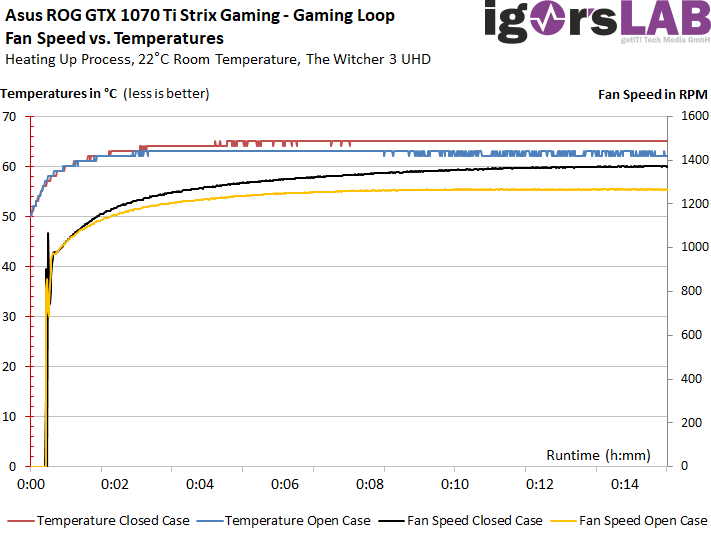
The whole thing doesn't look much different with the stress test. In summary, the card with the three fans performs more than just average and can remain very quiet.
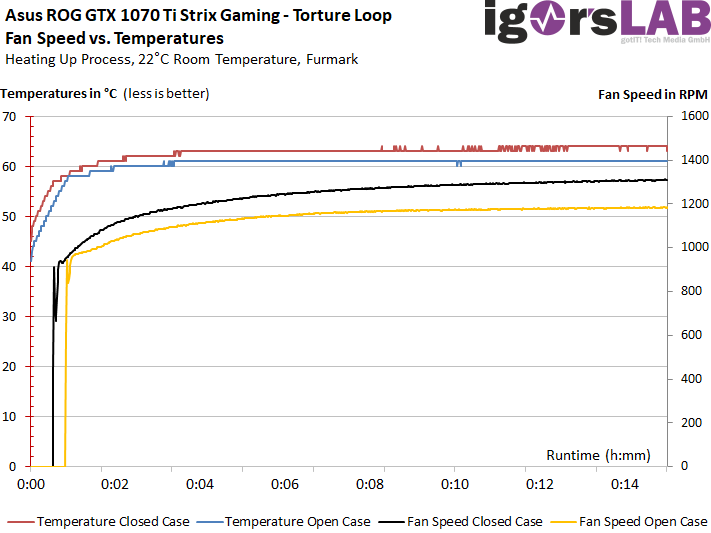
Reserves to make the fans rotate even lower, however, the card hardly has any more, you could actually make it louder in return to get it even cooler. But who wants and needs it?
| Measurements for fans and noise emission |
|
|---|---|
| Fan speeds Open Benchtable Maximum |
1188 rpm |
| Fan speeds Open Benchtable Average |
1125 rpm |
| Fan Speeds Closed Case Maximum | 1377 rpm |
| Fan Speeds Closed Case Average | 1352 rpm |
| Noise emission (air) Maximum |
33.3 dB(A) |
| Noise Emission (Air) Average |
32.4 dB(A) |
| Noise Emission (Air) Idle | 0 dB(A), passive mode |
| Sound characteristic / Hearing impression |
light bearing and engine noise< 1 Hz Voltage transformer noises audible |
To illustrate our subjective audio impression once again, we now have a high-resolution graphic with the complete frequency spectrum of our laboratory measurement:
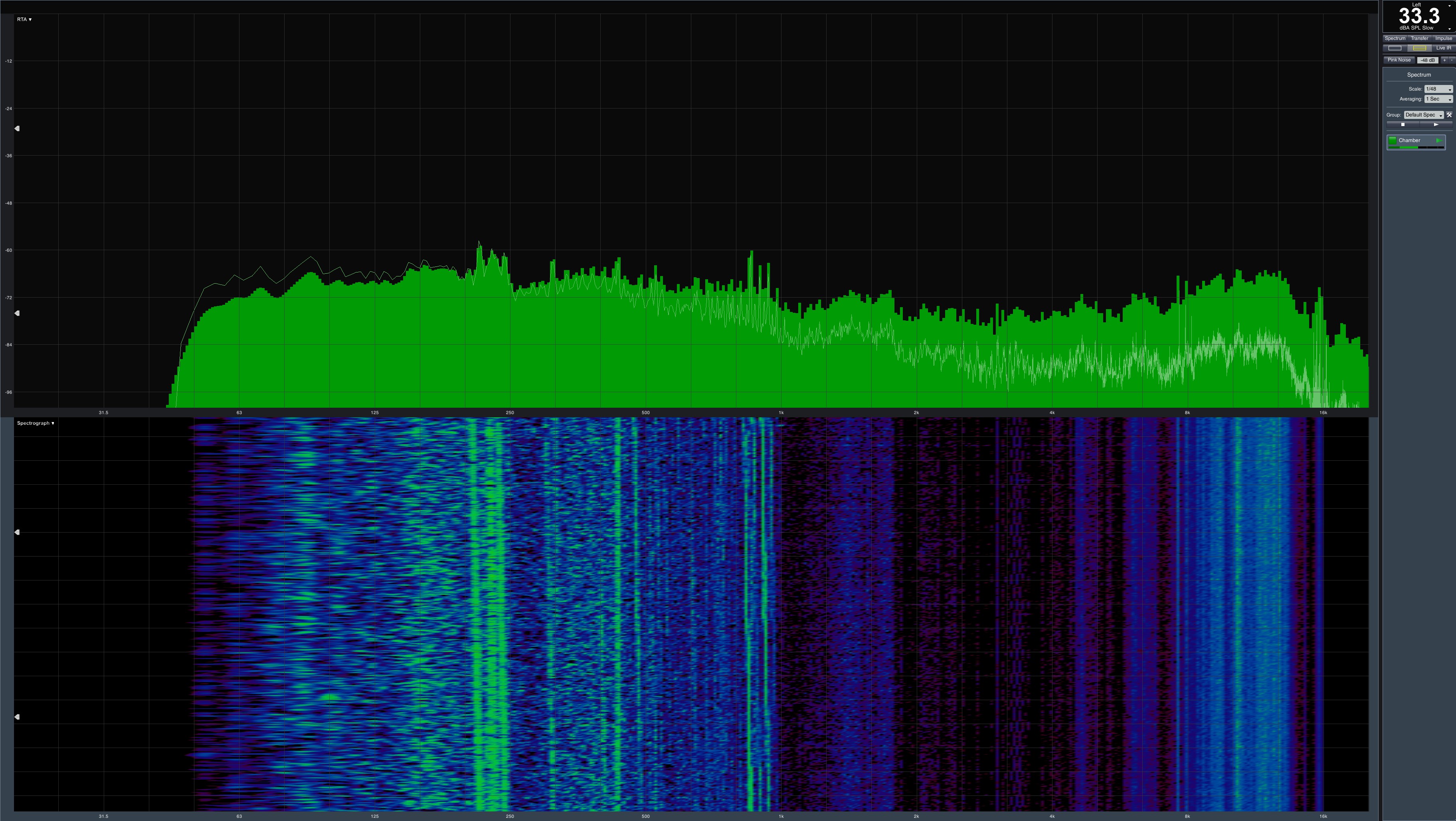
The 33.3 dB(A) is excellent for such a map and the measured temperatures. The map benefits greatly from the large-area cooler and the fast heatpipes.
















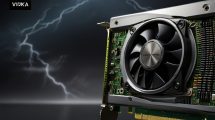















Kommentieren